Quilting—the sandwiching of a warmth-provider like cotton or wool between two pieces of cloth— is almost as old as farming and it can be traced back to ancient Egypt and China. Today, about 14% of all households in the United States has a quilter; that translates into 21 million quilters. Quilting is not just a hobby, it is big business.

The Nature Center and Ice Pond House
I came to quilting about 20 years ago. Engaged daily in cerebral activities at that time, I found quilting, watching something come alive with color and pattern into a finished product, was much more satisfying than the vocation I had chosen. I was hooked. So, when the Drumlin Farm folks suggested a map might be a helpful tool for visitors to find their way around the farm, I gladly picked up the mantle.
Once a rough design was agreed upon, I embarked on gathering fabric for the project. For me, selecting the right fabrics to interpret a work is like a treasure hunt. The colors, the scale, the personality of the fabric all matter. Patterns and designs speak to a project. Thousands of bolts of fabric, dozens of purchased yards, and hours of internet searching later, I finally had a stash of fabric from which to fashion a quilt map of the farm. This search took about six months.

The Red Barn
Fabrics for each building were chosen to not only preserve the integrity of the building but to create a visual impression that would resonate with those looking for guidance around the farm. The animals, the aviaries of Bird Hill and the Underground posed the most challenges. The aviaries are made of regular household screening wrapped in electrical tape (a thank you to Moison Ace Hardware in Bedford for giving me the screening when I told him what I wanted it for) and the Underground is really a piece of air conditioning filter a friend offered for use. The animals posed a harder challenge since Heritage breeds are not on the minds of fabric designers but finally compatible animals were found. Each building was drafted on paper for size, scale, and perspective before it was produced in fabric form.
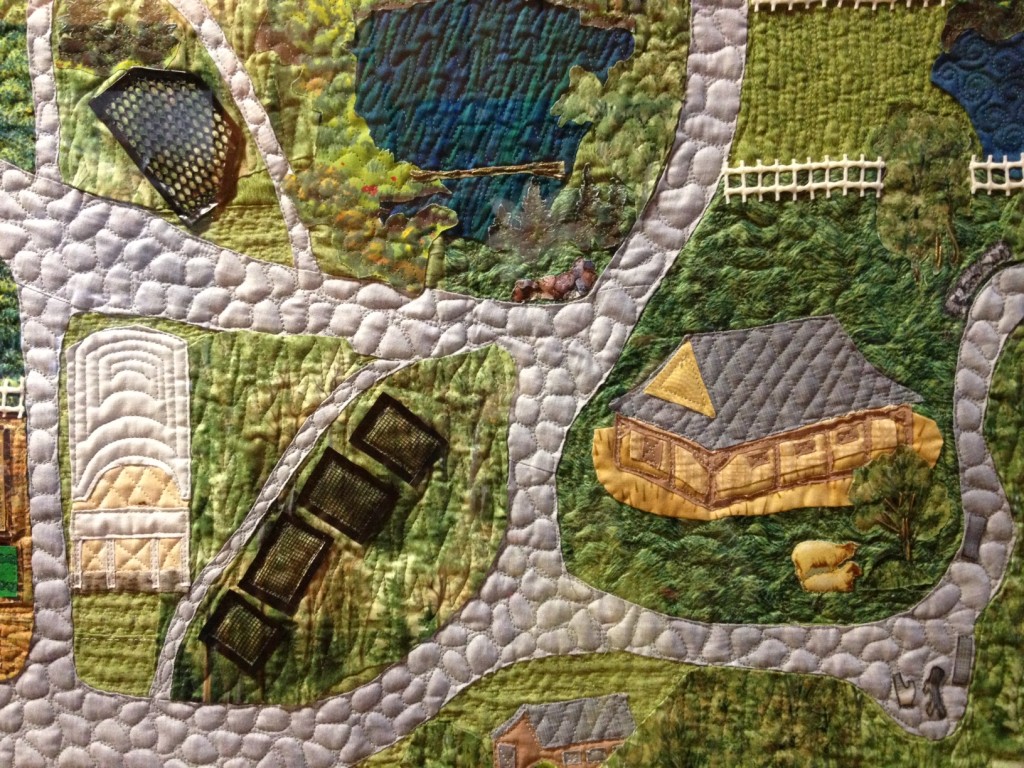
Drumlin Underground, the vernal pool, the Crossroads Barn, Bird Hill, and the Farm Life Center
Which detail to depict and which detail to delete was a decision that hovered over every aspect of this quilt. The mere size of the piece eliminated some detail, but other detail, like the old fallen tree in the picnic area and the rock protruding from the earth along the walkway from the parking lot to the Admissions window, were too important to our young visitors—and my grandchildren– not to be included.
Finally, when the top had been pieced and appliquéd, I turned it over to Concessa Shearer of Wayland so she could work her magic. A very talented artist/quilter, she machine quilted the top, the batting, and the backing into a completed quilt map.
The quilted map of Drumlin Farm now hangs in the hall of the Nature Center—be sure to check it out on your next visit!
—Linda Conrad is a long-time volunteer at Drumlin Farm


 It’s strawberry time! We’re finally getting the heat that ripens the berries, and they’re coming on fast. We had lots for the stand on Tuesday, and we are confident there will be a good amount for this Saturday, June 21 at
It’s strawberry time! We’re finally getting the heat that ripens the berries, and they’re coming on fast. We had lots for the stand on Tuesday, and we are confident there will be a good amount for this Saturday, June 21 at 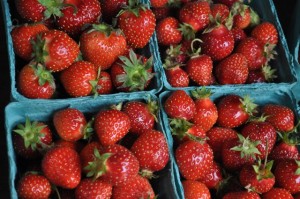 Stop by our farmstand during your visit to the farm to buy a pint for yourself while they are available. You can also us at the
Stop by our farmstand during your visit to the farm to buy a pint for yourself while they are available. You can also us at the 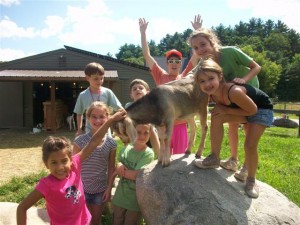 hat little there was of the spring and welcome the onset of summer, Drumlin Farm starts to transform. You may have noticed that there are not many family programs in July and August. Yet, the farm will buzz with activity as 200 kids come each weekday to work in the fields, take nature walks, get up-close to wildlife, participate in farm chores, and play games.
hat little there was of the spring and welcome the onset of summer, Drumlin Farm starts to transform. You may have noticed that there are not many family programs in July and August. Yet, the farm will buzz with activity as 200 kids come each weekday to work in the fields, take nature walks, get up-close to wildlife, participate in farm chores, and play games.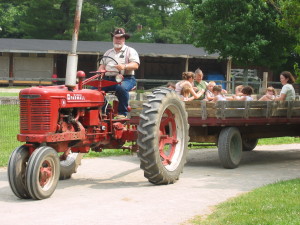 What does this mean for the everyday visitor? We may not have as many preregistered programs, but there will still be plenty to see and do all summer long. Our teacher naturalists provide hands-on programming related to wildlife, farming, and the environment each day. On weekdays you can join these drop-in programs at 10 am and 11:30 am and, on weekends, another program is offered at 2:30 pm.
What does this mean for the everyday visitor? We may not have as many preregistered programs, but there will still be plenty to see and do all summer long. Our teacher naturalists provide hands-on programming related to wildlife, farming, and the environment each day. On weekdays you can join these drop-in programs at 10 am and 11:30 am and, on weekends, another program is offered at 2:30 pm.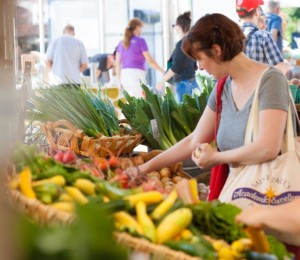 When the CSA (Community Supported Agriculture) movement was beginning in the early 80s, growers and consumers alike were motivated by the idea that people had lost connection with food production on local farms, and would eagerly embrace the opportunity to visit a farm once per week to pick up a share of the season’s harvest. Now, almost forty years later, the newest trend in CSA farming is the weekly home delivery of a boxed share. It’s a measure of farmers’ marketing sense that we continually find ways to increase the appeal of our products, yet it’s possible that in the near future people may again find themselves becoming curious about what it’s like to be on the farm that produces these wonderful boxes of food.
When the CSA (Community Supported Agriculture) movement was beginning in the early 80s, growers and consumers alike were motivated by the idea that people had lost connection with food production on local farms, and would eagerly embrace the opportunity to visit a farm once per week to pick up a share of the season’s harvest. Now, almost forty years later, the newest trend in CSA farming is the weekly home delivery of a boxed share. It’s a measure of farmers’ marketing sense that we continually find ways to increase the appeal of our products, yet it’s possible that in the near future people may again find themselves becoming curious about what it’s like to be on the farm that produces these wonderful boxes of food. To start off the visit, Danielle helped the students become part of their own food web. Standing in a circle, each student was given an index card with one element of the food web written on it. Starting with the sun, the students passed yarn across the circle to the next “step” in the food web. From the sun to an oak tree, from the oak tree to a squirrel, from the squirrel to a red tailed hawk, from the hawk to a mouse, and so on. By the end, the web of yarn was so intertwined that is would have been impossible to remove one piece and maintain the web, showing the importance of each organism to the others.
To start off the visit, Danielle helped the students become part of their own food web. Standing in a circle, each student was given an index card with one element of the food web written on it. Starting with the sun, the students passed yarn across the circle to the next “step” in the food web. From the sun to an oak tree, from the oak tree to a squirrel, from the squirrel to a red tailed hawk, from the hawk to a mouse, and so on. By the end, the web of yarn was so intertwined that is would have been impossible to remove one piece and maintain the web, showing the importance of each organism to the others.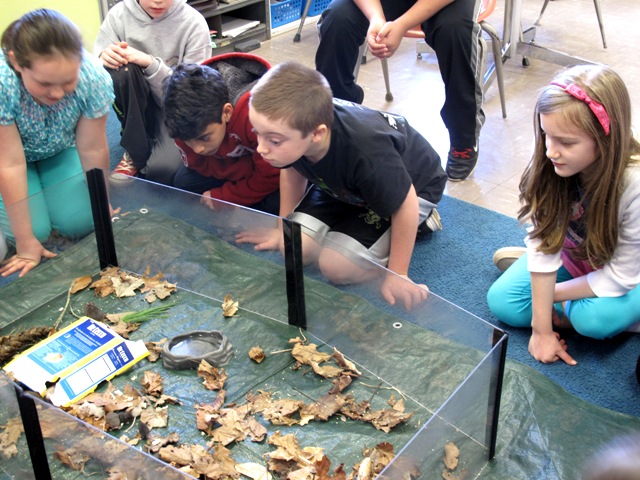
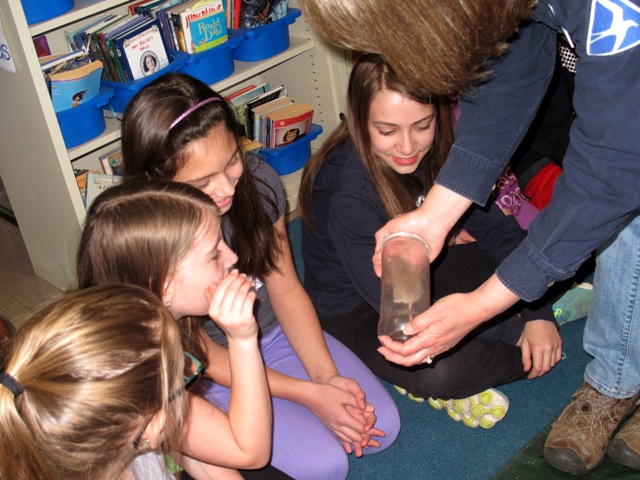 The kids were able to get an even closer view as Danielle walked around holding one mouse in a tennis ball container. To Ms. Miranda’s relief, all 15 mice made it back to their carrier, and the students were ready for the next guest.
The kids were able to get an even closer view as Danielle walked around holding one mouse in a tennis ball container. To Ms. Miranda’s relief, all 15 mice made it back to their carrier, and the students were ready for the next guest. Moving up the food chain, Danielle sat in a chair to hold the corn snake in her lap. Though corn snakes are not native to Massachusetts, they are similar to the milk snake, which is a native species. Mouths open wide, the 5th graders learned that while humans are limited by the joint of their jaw bone to the skull, snakes can detach their jaws. This adaptation allows them to swallow their prey (like mice) whole. Brave students were able to stroke the tail of the snake as Danielle walked around the circle, showing of the snake’s cold scales.
Moving up the food chain, Danielle sat in a chair to hold the corn snake in her lap. Though corn snakes are not native to Massachusetts, they are similar to the milk snake, which is a native species. Mouths open wide, the 5th graders learned that while humans are limited by the joint of their jaw bone to the skull, snakes can detach their jaws. This adaptation allows them to swallow their prey (like mice) whole. Brave students were able to stroke the tail of the snake as Danielle walked around the circle, showing of the snake’s cold scales.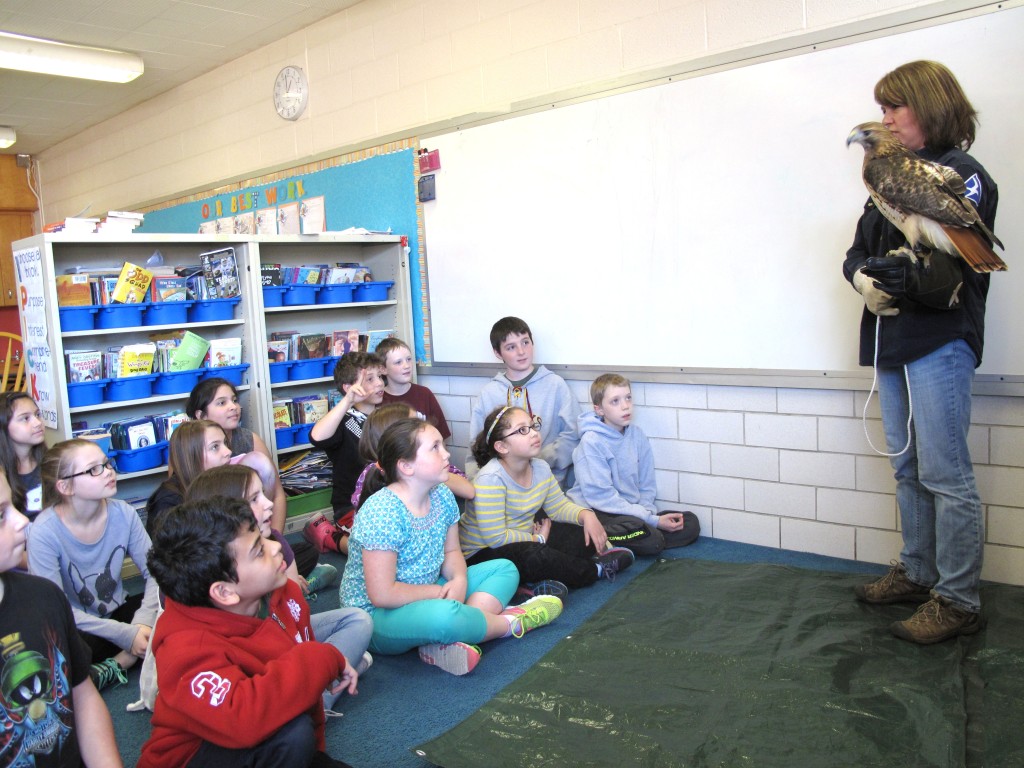 Finally, Danielle presented a red-tailed hawk. Though this particular hawk is blind in one eye, the students marveled at a hawk’s ability to see mice from half a mile away! Once it has spotted prey, the hawks sturdy wing allows it to dive quickly enough to catch even a moving animal. Danielle passed around a hawk wing for the students to feel, giving them a sense of how a hawks adaptations allow it to survive at the top of this chain in the complex food web.
Finally, Danielle presented a red-tailed hawk. Though this particular hawk is blind in one eye, the students marveled at a hawk’s ability to see mice from half a mile away! Once it has spotted prey, the hawks sturdy wing allows it to dive quickly enough to catch even a moving animal. Danielle passed around a hawk wing for the students to feel, giving them a sense of how a hawks adaptations allow it to survive at the top of this chain in the complex food web.



 Onions. They get a bad rep for being too pungent and causing tears, but even an amateur chef knows that onions are a kitchen necessity. Minced, diced, chopped, sliced, or whole, these versatile bulbs are roasted, boiled, sautéed, grilled, caramelized, or used raw in just about any recipe you can think of. And, they are one of the first crops we tend to as we prepare for spring on the farm.
Onions. They get a bad rep for being too pungent and causing tears, but even an amateur chef knows that onions are a kitchen necessity. Minced, diced, chopped, sliced, or whole, these versatile bulbs are roasted, boiled, sautéed, grilled, caramelized, or used raw in just about any recipe you can think of. And, they are one of the first crops we tend to as we prepare for spring on the farm.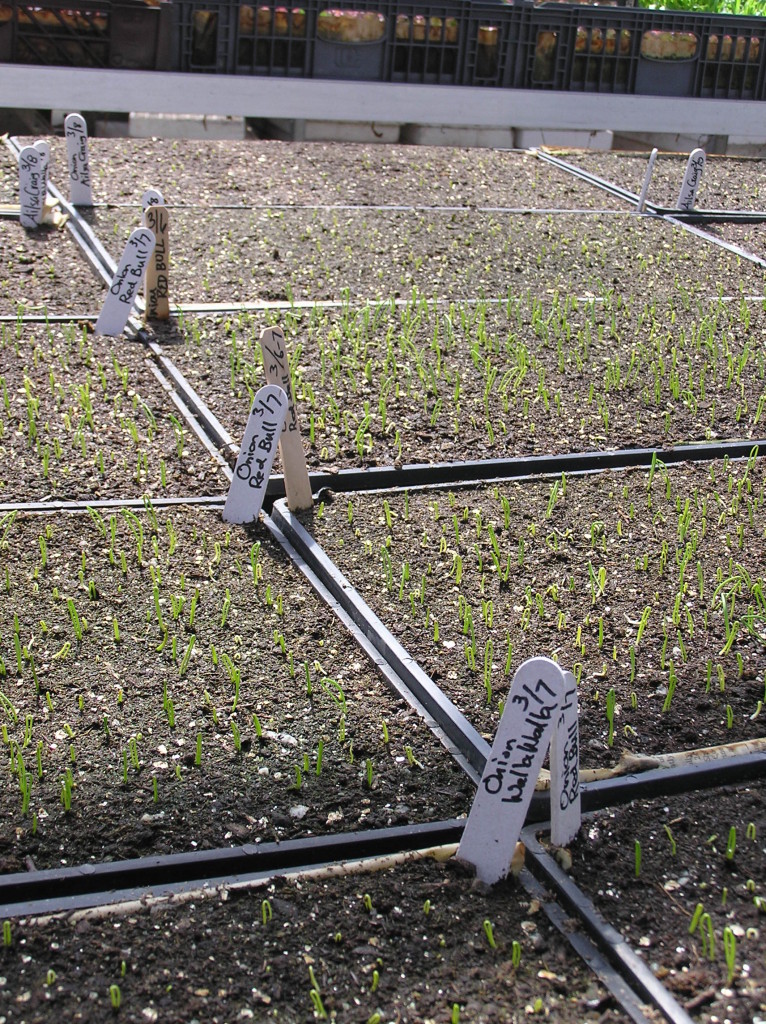

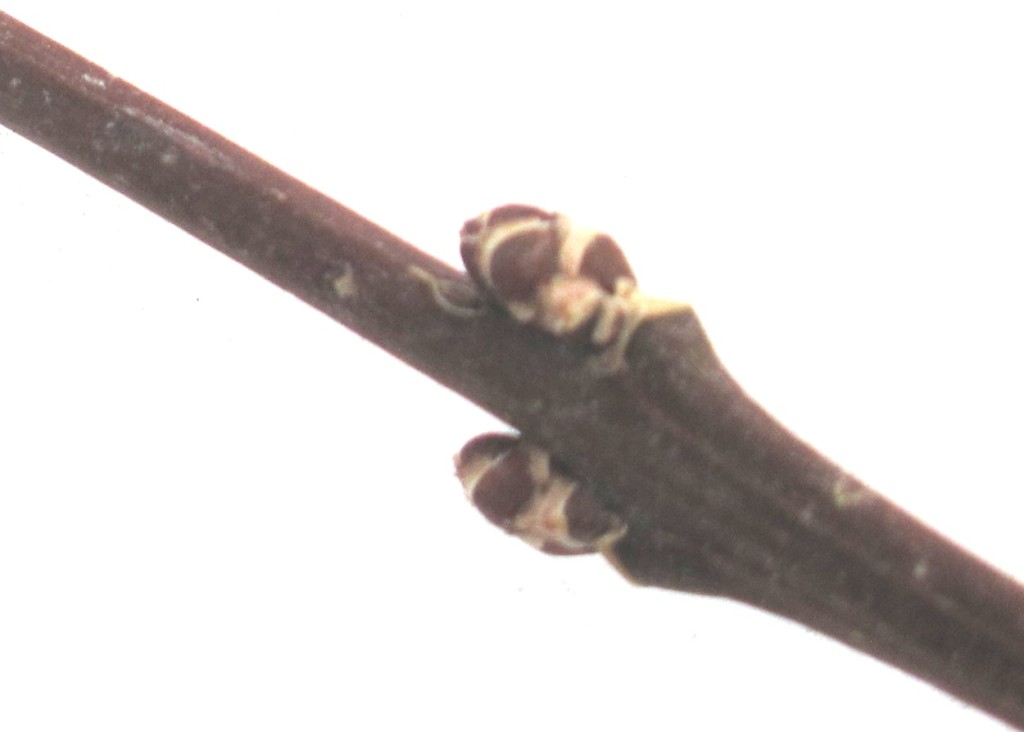

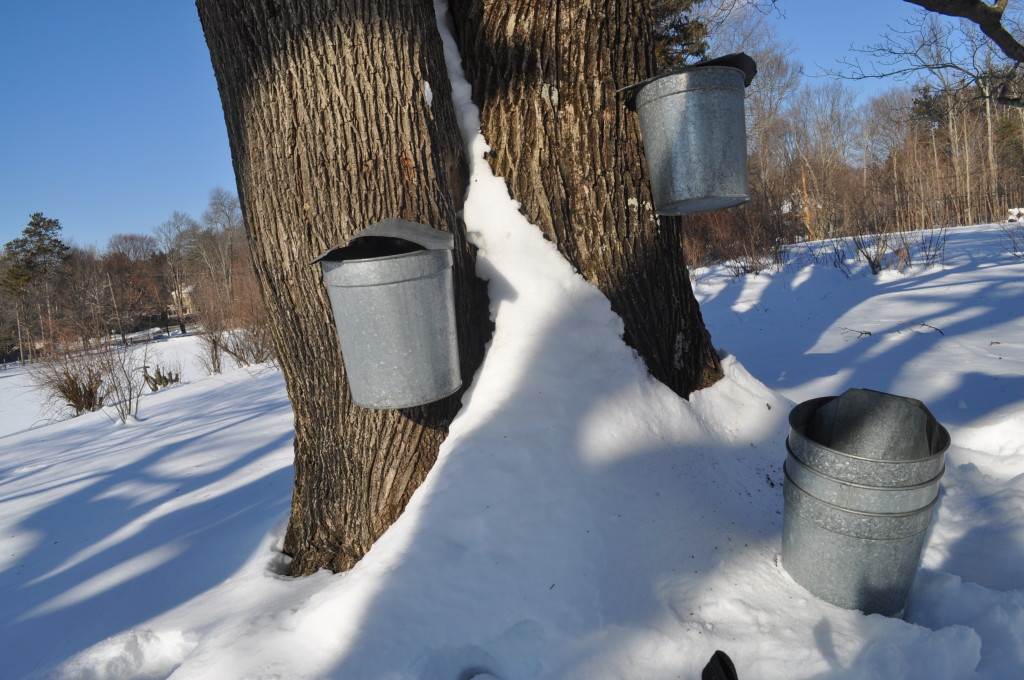 We use a “tree-saver” spile that has a smaller diameter than traditional spiles, making it healthier for the tree in the long run. This less intrusive, more compact model doesn’t open the tree up to possible infection in the same way as traditional spiles. This year, 100% of our trees will be tapped with the tree-saver spile!
We use a “tree-saver” spile that has a smaller diameter than traditional spiles, making it healthier for the tree in the long run. This less intrusive, more compact model doesn’t open the tree up to possible infection in the same way as traditional spiles. This year, 100% of our trees will be tapped with the tree-saver spile!